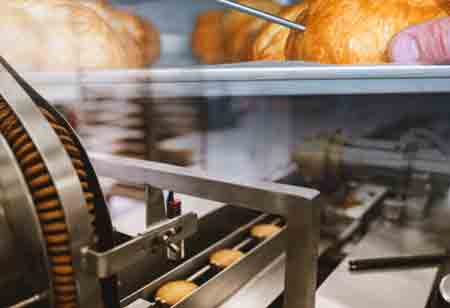Thank you for Subscribing to Food Business Review Weekly Brief
The Organic Food Chain: A Comprehensive Guide
The organic production standards require a land that should take the restriction over prohibited production. This will increase the number of organic farmers and suppliers.

By
Food Business Review | Monday, September 09, 2024
Stay ahead of the industry with exclusive feature stories on the top companies, expert insights and the latest news delivered straight to your inbox. Subscribe today.

The organic production standards require a land that should take the restriction over prohibited production. This will increase the number of organic farmers and suppliers.
Fremont, CA: The high demand for and growth of organic food is claustrophobic to the food and beverage industry. Major changes affecting the supply chain include new methods of producing, sourcing, and procuring organic commodities.
The trend of organic food isn’t going to decline anytime soon, so industry experts should familiarize themselves with these five challenges facing the organic food chain.
BUSINESS MANAGEMENT
To capitalize on global opportunities, you should unify the supply chain, manufacturing process, product development and distribution network and create one system to organize the entire process.
However, it would help if you did that to thrive in this competitive business environment.
INSUFFICIENT ORGANIC FARMS
The cumbersome organic food and beverage market depends on organic farming, which faces numerous challenges, such as pest attacks, high fertile land, and high raw materials costs. These reduce the buyer’s negation power and increase inconsistent supply risks.
The producers can avoid the risk by converting the average agricultural farmland into organic farmland.
PEST RISKS AND THREATS
The core value of organic farming is based on how producers cultivate the product without using pesticides. It is essential to consider the risk associated with pests, which can destroy crops, but without using pesticides, it takes a long time to produce organic goods.
The organic production standards require a land that should take the restriction over prohibited production. This will increase the number of organic farmers and suppliers.
INSUFFICIENT ORGANIC FOOD GROWTH
Certain organic crops are seasonal, and some regions cannot meet customer demands, creating a supply chain challenge that raises costs and hinders progress. Companies often rely on multiple suppliers to obtain the products they need. For instance, organic food businesses may import various organic ingredients from different regions, increasing import costs and supply chain complexity.
ORGANIC FOOD TRANSPORTATION
Transporting organic food separately from non-organic food is a big challenge. Companies that sell both kinds of food need to use different machinery for each type or take extra time to clean the machines thoroughly in between. This slows down production. Organic food must also be kept refrigerated during transportation to prevent spoiling.






